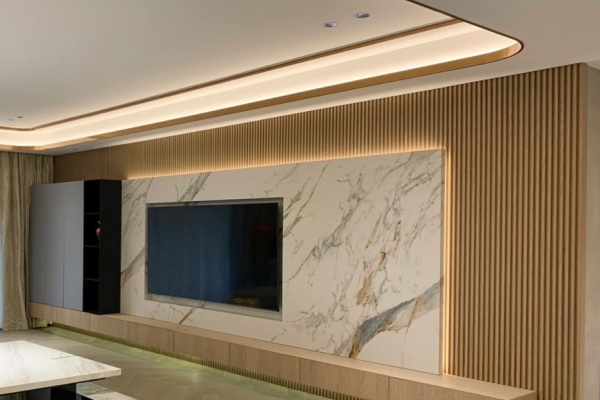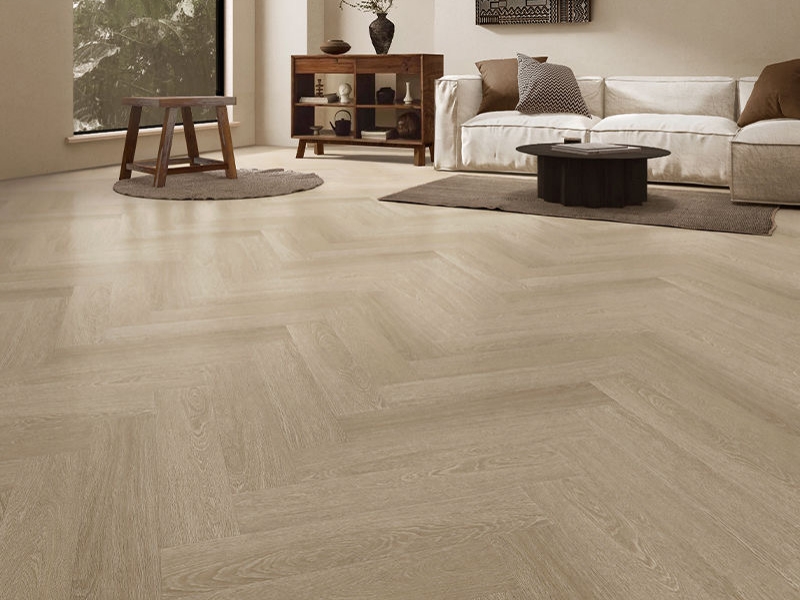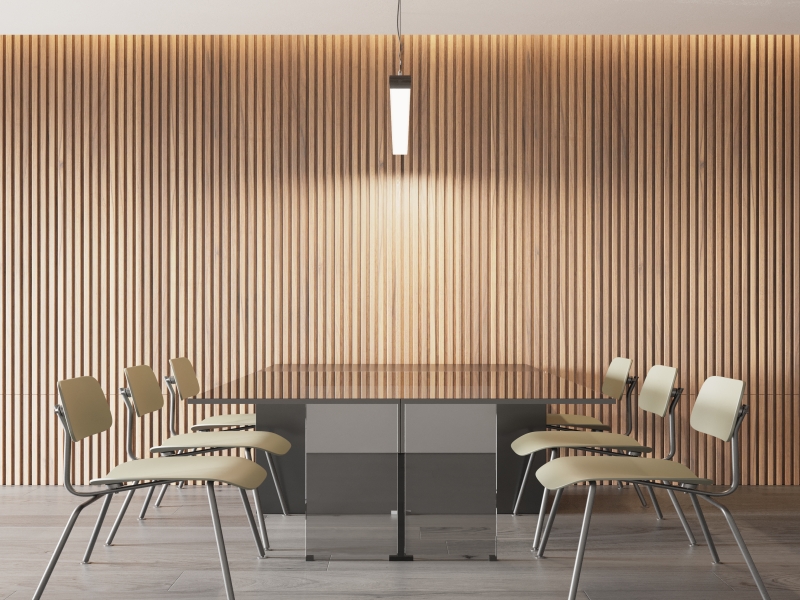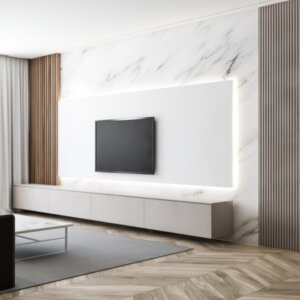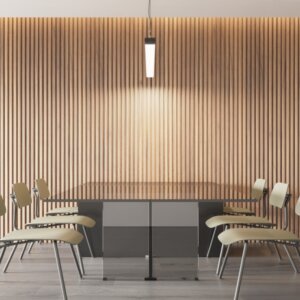How to Start a Successful WPC Wall Panel Business: A Comprehensive Guide
Understanding WPC Wall Panels: What They Are and Why They Matter
Wood Plastic Composite (WPC) wall panels represent a modern marvel in construction materials, blending the natural charm of wood with the resilience of plastic. Composed of wood fibers or sawdust mixed with thermoplastics like polyethylene (PE), polypropylene (PP), or polyvinyl chloride (PVC), these panels offer a robust alternative to traditional options. WPC manufactures craft these panels to withstand moisture, pests, and decay—issues that plague conventional wood—making them perfect for both indoor elegance and outdoor durability.
What sets WPC wall panels apart is their eco-friendly edge. Often made from recycled materials, they reduce waste and appeal to environmentally conscious consumers. Their low-maintenance nature—no need for constant painting or sealing—adds to their allure. Imagine a homeowner installing sleek panels in their living room or a business cladding an office exterior with zero worry about warping. That’s the promise of WPC.
The market agrees: reports suggest the global WPC industry could hit $12.5 billion by 2025, growing at an 11.4% CAGR from 2020. This surge reflects rising demand for sustainable, stylish, and sturdy building solutions. For entrepreneurs, this signals a golden opportunity to tap into a thriving niche with WPC wall panels leading the charge.
Market Research and Planning: Laying the Foundation for Your Business
Launching a WPC wall panel business starts with a deep dive into the market. Knowledge is power here—understanding who’s buying and why sets the stage for success. WPC wall panels cater to diverse crowds: homeowners seeking green renovations, commercial builders eyeing durability, or designers chasing unique aesthetics. Pinpointing your niche—say, luxury interiors or budget-friendly exteriors—sharpens your focus.
Next, scope out the competition. Other WPC manufactures and retailers are your benchmarks. What do they offer? Are their prices steep or bargain-basement? Do they push online sales or rely on local showrooms? This intel reveals gaps you can exploit—perhaps custom designs they overlook or faster delivery they can’t match.
Your unique selling proposition (USP) seals the deal. Maybe it’s sourcing from sustainable WPC manufactures, offering bespoke patterns, or bundling installation services. Think of it as your business’s signature—like a standout logo on a sock (inspired by meetsocks.com)—that makes customers choose you. A solid plan built on this research ensures you’re not just entering the market but dominating it with WPC wall panels tailored to your audience.
Setting Up Your WPC Wall Panel Business: Key Steps and Considerations
With research in hand, it’s time to build your WPC wall panel empire. First, decide your role: manufacturer or reseller? Manufacturing means crafting WPC wall panels from scratch—mixing wood and plastic, shaping them with extruders, and controlling every detail. It’s a big investment—think machinery and raw materials—but you dictate quality and variety. Reselling is leaner: you buy from WPC manufactures and focus on distribution, dodging hefty startup costs but sacrificing some creative control.
Sourcing is critical either way. Partner with reliable suppliers offering top-grade wood fibers and thermoplastics at fair prices. Quality hiccups here can tank your reputation—imagine a batch of panels cracking mid-installation. If manufacturing, you’ll also need gear like mixers and cutters, so budget wisely.
Legal steps can’t be skipped. Register your business, snag a tax ID, and check local regulations—some regions demand certifications for building materials. Safety and compliance keep you legit and customer-trusted. Whether you’re a WPC manufactures pioneer or a savvy reseller, this setup phase is your foundation. Nail it, and you’re ready to roll out WPC wall panels that wow the market.
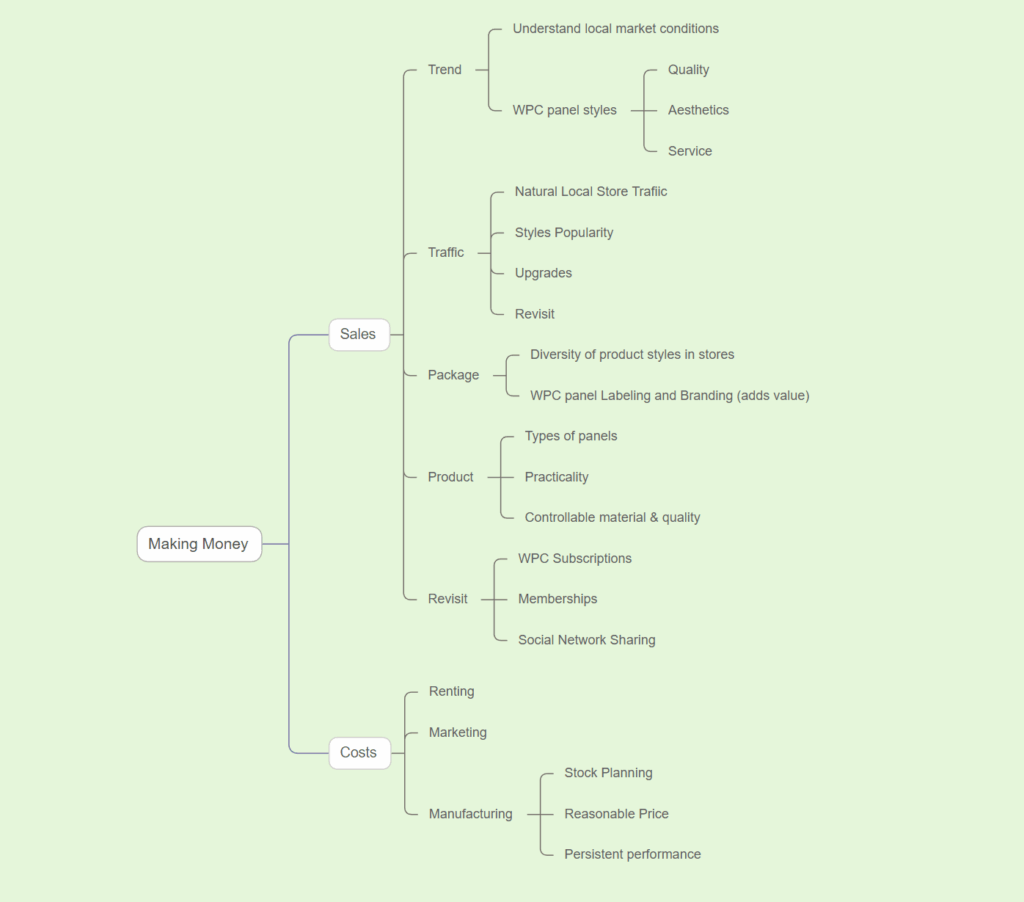
Increase more sales
Getting WPC wall panels into customers’ hands hinges on smart marketing. Start with a killer store presence. Your store should dazzle—think vibrant photos of panels in chic homes or sturdy offices.
Social media is your megaphone. Platforms like Instagram and Tiktok thrive on visuals—post your panels in action, from cozy dens to sleek storefronts. Targeted ads can zero in on eco-minded renovators or budget-conscious builders. Take a cue from meetsocks.com: their sock-selling tips highlight storytelling—share how your panels transform spaces to hook followers.
Content marketing builds cred. Blog about WPC benefits—durability, sustainability—or drop DIY install videos. Offline, hit trade shows or link up with designers and contractors for referrals. These moves don’t just attract customers—they boost sales by positioning your WPC wall panels as the go-to choice in a crowded market.
Operations and Logistics
Running a WPC wall panel business smoothly demands tight operations. Inventory is step one: track your stock like a hawk. Too little, and you’re losing sales; too much, and cash is tied up. Software can predict reorder points based on sales trends—keep those WPC wall panels flowing without clogging your warehouse.
Quality control is non-negotiable. Whether you’re a WPC manufactures pro or reselling, test every batch. A flawed panel—say, one that splinters—can sour your rep fast. Set strict standards and stick to them. Customer service ties it together: answer queries pronto, provide clear install guides, and fix issues fast. Happy clients spread the word.
Logistics seal the deal. Pick dependable shippers—damaged WPC wall panels on arrival kill trust. Offer flexible delivery options and pack smart to avoid dings. Every detail counts. Streamline these pieces—inventory, quality, service, shipping—and your operation hums, keeping customers coming back for more of your standout WPC wall panels.
Spending less costs
Money makes or breaks your WPC wall panel venture, so plan sharp. First, tally your startup costs—equipment if you’re manufacturing, stock if reselling, plus marketing and rent. Funding could come from savings, loans, or investors pitching in. A clear budget keeps you grounded.
Pricing is your profit lever. Study competitors—how do WPC manufactures price their panels? Factor in your costs—materials, labor, shipping—and aim for a sweet spot: affordable yet profitable.
Cost-cutting’s key. Negotiate with suppliers for bulk discounts or streamline production to trim waste—every penny saved boosts your bottom line. Don’t skimp on quality, though; cheap panels flop fast. Track your finances monthly—sales, expenses, margins—and tweak as needed. Maybe a promo spikes revenue, or a leaner shipper slashes overhead. This discipline ensures your WPC wall panels business isn’t just surviving but thriving financially.
Case Study
Woocan Company (woocanwood.com) shines as a WPC wall panel manufacturer. Their lineup boasts varied designs—think rich textures and bold hues—perfect for cozy living rooms or sleek office facades. Woocan’s WPC manufactures process leans on cutting-edge tech, ensuring every panel resists wear and weather.
What’s their edge? Innovation and quality. Woocan invests in top-tier machinery and strict checks, delivering WPC wall panels that last. Their eco-focus—using recycled inputs—wins green points, too.
Woocan’s lessons? Prioritize product excellence and customer ease. Their success shows that WPC manufacturers are able to skillfully apply their craftsmanship to production, thereby leading the development of the industry. Aspiring owners can borrow this playbook—focus on standout WPC wall panels, leverage tech, and build a brand customers trust and love.
Conclusion: Key Takeaways and Next Steps
Starting a WPC wall panel business is a ticket to a booming market. WPC wall panels—tough, green, and gorgeous—are hot, with demand soaring. This guide lays it out: know your product, research hard, set up smart, market bold, run tight, and plan your cash flow. Each step builds a business that lasts.
Takeaways? WPC manufactures tap into a $12.5 billion future. Target your crowd and carve a niche—your USP is your crown.
Next? Stay curious—track trends like new finishes or greener mixes. Keep improving—tweak designs, speed up delivery. Put customers first—great service turns buyers into fans. With grit and this roadmap, your WPC wall panel store isn’t just a startup—it’s a standout. Dive in and make it yours!

